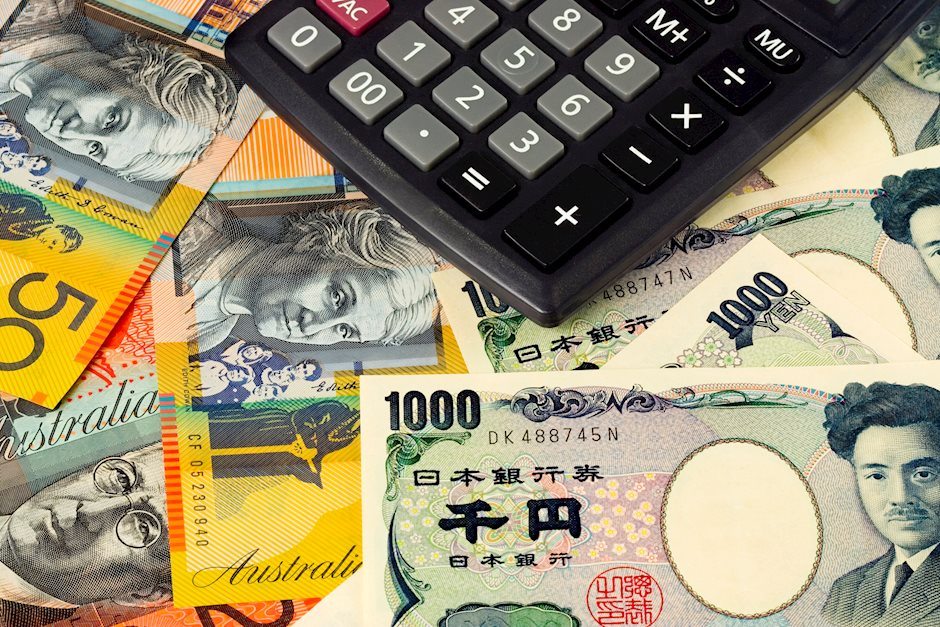AUD/JPY: Defensive near 95.00 despite firmer China PMI as yields, Japan data tease bears
- AUD/JPY holds lower ground after reversing from 12-week high.
- China’s NBS Manufacturing PMI, Non-Manufacturing PMI both crossed market forecasts in August.
- Japan’s Industrial Production, Retail Sales flashed upbeat results for July, yields keep pullback from two-month top.
- Risk catalysts will be more important for fresh impulse.

AUD/JPY struggles to justify upbeat China activity data while defending the 95.00 threshold, despite recently picking up bids to 95.10 during Wednesday’s Asian session. The reason could be linked to the market’s cautious mood and firmer statistics from Japan, as well as downbeat yields.
China’s headline NBS Manufacturing PMI rose to 49.4 in August versus 49.2 expected and 49.0 prior whereas the Non-Manufacturing PMI also grew to 52.6 during the stated month compared to 52.2 market forecasts and 53.8 previous readings.
At home, Australia's second quarter (Q2) Construction Work Done dropped to -3.8% versus 0.9% market forecasts and -0.9% prior. Further, Aussie Private Sector Credit eased in July to 0.7% MoM from 0.9% prior while staying intact at 9.1% YoY.
On the other hand, Japan’s Industrial Production for July improved to -1.8% YoY versus -2.6% expected and -2.8% prior. On the same line were the Retail Trade numbers for the said period, up 2.4% YoY compared to 1.95 market forecasts and 1.5% prior.
Elsewhere, the US 10-year Treasury yields rose to the highest levels in two months before the latest pullback to 3.10%. The retreat in the bond yields could be linked to the market’s cautious mood ahead of this week’s key data, namely Eurozone inflation and the US Nonfarm Payrolls (NFP).
It’s worth noting that the AUD/JPY pair is often considered the risk barometer and hence the market’s indecision also exerts downside pressure on the quote. While portraying the mood, the Asia-Pacific equities trade mixed and the S&P 500 Futures print mild gains after Wall Street closed in the red.
While talking about challenges to risk, Taiwan’s firing of the warning shots for 1st time at a Chinese drone, per Reuters, joined the Wall Street Journal’s news stating that the US Army grounds entire fleet of Boeing-made Chinook helicopters to weigh on the market sentiment. Also challenging the risk appetite, as well as the AUD/JPY prices are the coronavirus fears as mainland China had confirmed 243,081 cases with symptoms as of August 30, per Reuters. The news also mentioned that China's capital Beijing and the financial hub of Shanghai reported one new local symptomatic case each while China's southern technology hub of Shenzhen reported 37 new locally transmitted COVID-19 infections on Tuesday, up from 35 a day earlier.
Above all, growing fears of recession and the recent softness in the Reserve Bank of Australia’s (RBA) tone seem to weigh on the AUD/JPY prices. However, the monetary policy divergence between the RBA and the Bank of Japan (BOJ) could keep buyers hopeful.
That said, headlines surrounding the Sino-American tussles, China’s covid conditions and global recession fears could entertain AUD/JPY traders.
Technical analysis
Failure to cross the 95.70-75 hurdle, comprising the tops marked during April and July, keeps AUD/JPY bears hopeful of revisiting an upward sloping support line from August 03, close to 94.70 by the press time.
Author

Anil Panchal
FXStreet
Anil Panchal has nearly 15 years of experience in tracking financial markets. With a keen interest in macroeconomics, Anil aptly tracks global news/updates and stays well-informed about the global financial moves and their implications.

















